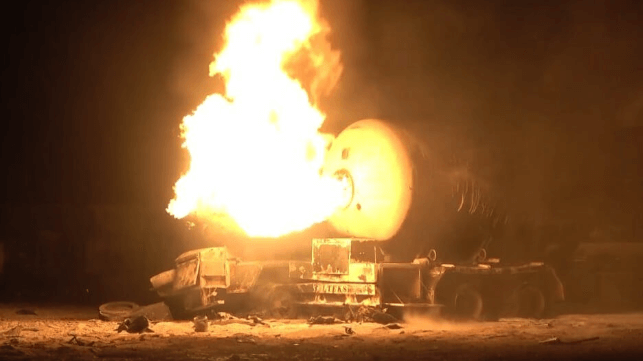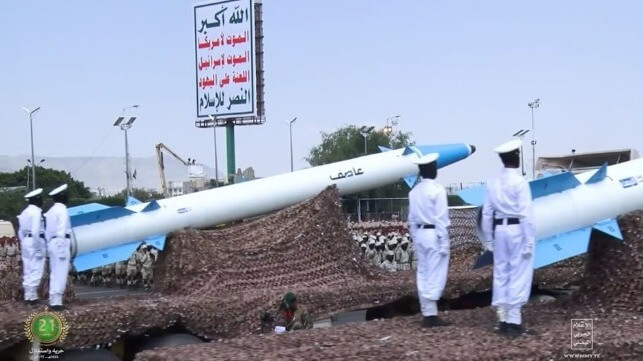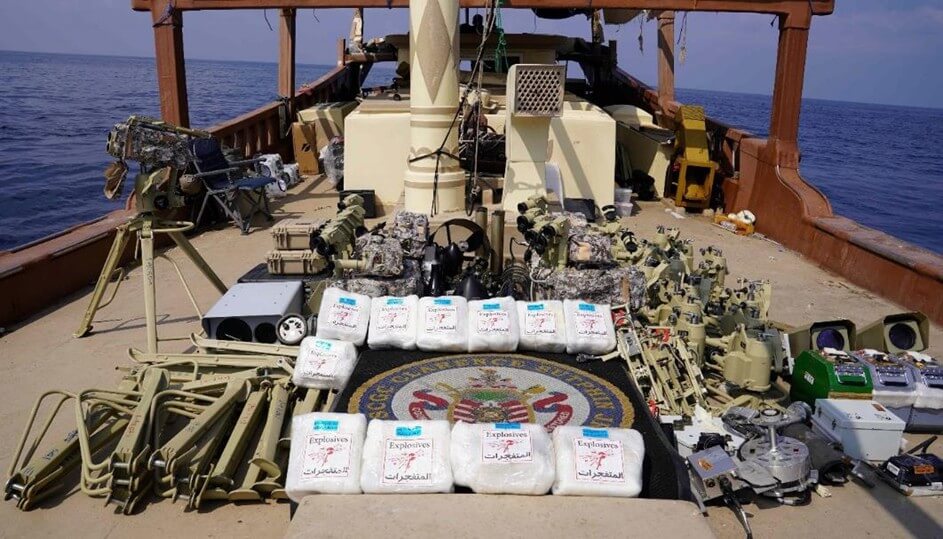U.S. Strike on Yemen Oil Port Kills 58, Houthis Say
At least 58 people were killed in U.S. air strikes on a fuel port in Yemen, Houthi-run Al-Masirah TV said on Friday, in what could be the deadliest U.S. attack in Yemen since U.S. President Donald Trump ordered strikes on targets of the Iran-aligned rebels a month ago.
In the middle of March, the U.S. began air strikes on Houthi targets in Yemen, with the U.S. Department of Defense stating the attacks would continue until the Houthis stop attacking ships traversing the Red Sea.
The U.S. Central Command said on Thursday about the attack that “The Iran-backed Houthis use fuel to sustain their military operations, as a weapon of control, and to benefit economically from embezzling the profits from the import.”
“This fuel should be legitimately supplied to the people of Yemen. Despite the Foreign Terrorist Designation that went into effect on 05 April, ships have continued to supply fuel via the port of Ras Isa. Profits from these illegal sales are directly funding and sustaining Houthi terrorist efforts.”
The Central Command also noted that “US forces took action to eliminate this source of fuel for the Iran-backed Houthi terrorists and deprive them of illegal revenue that has funded Houthi efforts to terrorize the entire region for over 10 years.”
The U.S. military said that the objective of the latest strikes was to reduce the economic source of power of the Houthis.
“This strike was not intended to harm the people of Yemen, who rightly want to throw off the yoke of Houthi subjugation and live peacefully.”
“The Houthis, their Iranian masters, and those who knowingly aid and abet their terrorist actions should be put on notice that the world will not accept illicit smuggling of fuel and war material to a terrorist organization,” the Central Command said.
The Houthis responded in a statement that “We affirm that the targeting of the Ras Isa oil port is a full-fledged war crime, as the port is a civilian facility and not a military one.”
By Charles Kennedy for Oilprice.com
U.S. Destroys Houthi Fuel Terminals at Ras Isa
As the region gears up for a new ground offensive, U.S. forces hit fuel piers in Ras Isa

After striking fuel piers at Ras Isa, Yemen on Thursday, U.S. Central Command expressed solidarity with Yemeni citizens who want to "throw off the yoke of Houthi subjugation." It is the first time since the start of the Red Sea maritime security crisis that the command has discussed regime change in northwestern Yemen, and it comes amidst reports of Yemeni government-aligned troops preparing for a ground offensive against the Houthis.
"Today, US forces took action to eliminate this source of fuel for the Iran-backed Houthi terrorists and deprive them of illegal revenue that has funded Houthi efforts to terrorize the entire region for over 10 years," U.S. Central Command said in a statement.
The strike hit at least two different locations in Ras Isa, triggering large secondary explosions. Houthi media outlets have reported that more than two dozen people were killed in the blasts. In a statement, the Houthi leadership accused the U.S. of "direct targeting of the entire Yemeni people" and called the port "a vital civilian facility." Central Command did not discuss casualty numbers, but emphasized that the goal of the strike was not to harm Yemeni civilians.
Ras Isa is a dual-use port, providing energy imports for Houthi military operations and for the Yemen's civilian population. Duties on commercial energy imports are an important source of revenue for the Houthis' finances.
Previously, on April 9, the U.S. State Department warned that the U.S. would no longer tolerate "offloading ships and provisioning oil at Houthi-controlled ports." In addition to Ras Isa, the Houthis also control the key commercial port of Hodeidah, 100 miles away to the south.
Forces allied with Yemen's internationally-recognized government are reportedly arming and preparing for an offensive to retake the coastline region controlled by the Houthis. Bloomberg reports that U.S. military officials have held talks with regional partners and Yemen's anti-Houthi coalition about their plans for renewed combat on the ground.
Report: Chinese Satellites Feed Houthis Target Ship Data

U.S. officials are asserting that Chinese companies are providing support to the Houthi militants in Yemen with their attacks on Western shipping. The Financial Times is quoting a senior U.S. State Department official who says the Houthis have been receiving Chinese satellite data in addition to support from Iran for the attacks that started in late 2023 and targeted more than 100 merchant ships.
It was previously well understood that the Houthis were receiving targeting data for their missile and drone attacks on Israel and shipping in the Red Sea from both Russia and Iran, with IRGC Qods Force operatives based in Yemen acting as the conduit. The Iranian Khayyam satellite was jointly built with Russia, based on Kanopus-V imagery satellite, with the Iranian satellite likely to be operating within Russia’s own Kanopus-V constellation. The Iranians and Russians are likely to share most of the output of this combined constellation. Supplementing the satellite imagery data, the Iranians would have added in their own intelligence feeds from IRGC spy ships and regular Iranian Navy ships operating in the area, prior to these vessels being withdrawn from the area several months ago.
A senior State Department official in Washington briefed the Financial Times that the Chinese company Chang Guang Satellite Technology, a commercial entity owned by or with close links to the Chinese People’s Liberation Army, has also been feeding targeting data to the Houthis. Chang Guang Satellite is reported to have had 100 mini-satellites in orbit in 2024, a figure which was planned to rise to 300 by the end of 2025. With such a constellation, a 10-minute refresh time would be feasible for any point in the target area.
The Financial Times report was unclear whether raw imagery was being passed to the Houthis, or whether processed information was shared either as intelligence or in the form of targeting packs. Chinese military standard communications equipment that would enable such transmission has regularly been seized in the same consignments of arms and ammunition dispatched by the IRGC Qods Force to the Houthis but intercepted at sea by Coalition naval forces. With the reported withdrawal of IRGC Qods Force embeds in the Houthi command and control structure, in the face of targeted US attacks, there will be even greater emphasis on building data links to support the Houthis remotely as the American attacks continue, destroying and degrading the Houthis’ existing communications networks.

On January 28, US Coast Guard Cutter U.S. Coast Guard cutter USCGC Clarence Sutphin Jr (WPC 1147) seized a consignment en route to the Houthis which included Chinese military-grade communication and network equipment (CENTCOM)
The unnamed senior State Department official briefing the Financial Times was supported by Tammy Bruce, the State Department spokeswoman, who was quoted on the record as confirming that Chang Guang Satellite Technology was “directly supporting Iran-backed Houthi terrorist attacks on US interests”. The feed of information from the State Department as opposed to the Defense Department suggests that the Chinese behavior is being considered as a factor in broader discussions with China on matters of tariff and trade.
Surveillance carried out by the Chinese satellites may also enable the Chinese to warn off the Houthis from attacking Chinese ships as they transit the area. Chinese vessels are still regularly using the Gulf of Aden to Suez Internationally Recommended Transit Corridor, giving them a simple commercial advantage over shipping lines obliged by Houthi attacks to take the long way between Asia and Europe around the Cape of Good Hope.
No comments:
Post a Comment